Wupatki Ruins And Sacred Sunset Crater Of Ancestral Puebloans In Arizona
A. Sutherland - AncientPages.com - Our history is full of accounts of horrible battles, bloodthirsty warriors, ruthless kings, and queens seeking more power and territory.
The ancient people who once lived at Wupatki were different. Representing many different cultures, they created a wonderful, prospering community in a very harsh environment. Wupatki serves as an ancient symbol of how people from various nations can interact and work as one and create a peaceful society.
About 900 years ago, a very large volcano erupted in Northern Arizona. The eruption caused the Sinagua people to leave their homes in the region we today know as Flagstaff.
The Sinagua were the ancestors of the Pueblo Indians of the Four Corners area, including the Hopi Indians, who refer to them as Hisatsinom, which means “those who lived long ago”.
The volcano eruption formed the Sunset Crater and changed history in this region. Volcanic lava and cinder debris destroyed homes and made it impossible for Sunset Crater community to grow crops. People had to relocate to nearby areas.
Following the Sunset Crater eruption, ancient people discovered that farming in Flagstaff became easier because small layers of cinder and ash blanketing the northeastern lands helped keep the soil moist.
As a result of this, the region around the volcano became a melting pot of different Southwest cultures, including the Anasazi from the east and north, the Hohokam from the south, and the Mogollon from the southeast. All of these groups and more set up farming communities next to the less-sophisticated Northern Sinagua people, who had been living near Sunset Crater before the eruption.
Instead of smaller scattered pithouses, the new agricultural community now built large multi-level pueblos.
The tallest and largest of the pueblos was Wuptaki and it was constructed by a collection of several different prehistoric cultures. The name Wupatki derives from a Hopi word meaning “tall house”.
Wuptaki had multistory dwellings that contained more than 100 rooms and housed perhaps 150 people. Several storage rooms were also built.
The circular ruin at Wupatki resembles a great kiva, the lowest structure in Wupatki and a subterranean structure where people gathered and performed their religious ceremonies.
The Pueblo Indians were concerned and aware of the importance of weather changes. Although the volcanic moisture in the terrain made farming less of a challenge, the Indians still often performed religious ceremonies and asked the spirits to bring rain and good fortune to their lands.
People who lived at Wuptaki represented different cultures, but they all interacted peacefully in a harsh environment. The Wupatki people also constructed a ventilation system that allowed them to build fires within their homes. This was done by placing wooden beams and cover the ceilings with timber.
The roofs no longer exist, but these ancient building techniques were quite ingenious nevertheless. Despite the effects of weathering many components of the solid Wupatki dwellings remain intact.
The Wupaki people, especially the Hopi, considered the place to be a highly energized “spot of power.” According to Hopi traditions, Sunset Crater in Northern Arizona is a sacred mountain where angry gods once threatened to destroy evil people with its volcanic fire.
One reason why Wupatki was considered sacred is the blowhole that researchers found at the site. Blowholes are openings in the earth where water-cooled air rushes out when the air pressure below ground is greater than that above. Pueblo Indians held a “breathing cave,” that sends negative ionized air rushing through it very sacred.
Before Wupatki was abandoned in 1250, it served as a meeting place where different cultures exchanged ideas in the ceremonial ball court and traded goods to meet their needs. Tribes from the Hohokam tradition who were living in the southern region brought shells, salt, cotton, and the communities of the Ancestral Puebloan tradition traded copper and turquoise. Among those who traded at Wupatki were the Sinagua Indians from nearby pueblos, Navajo families, and other ancestral Puebloans whose descendants still live nearby.
There is not much left of Wuptaki, except some ancient ruins, and they are sacred to the Hopi, Zuni, and Navajo people.
Written by – A. Sutherland AncientPages.com Staff Writer
Copyright © AncientPages.com All rights reserved. This material may not be published, broadcast, rewritten or redistributed in whole or part without the express written permission of AncientPages.com
More From Ancient Pages
-
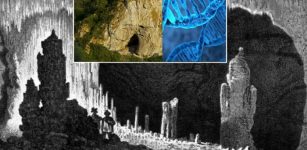 Neanderthals’ History Retrieved From Cave Sediments In Siberia And Spain – New Method
Archaeology | Apr 19, 2021
Neanderthals’ History Retrieved From Cave Sediments In Siberia And Spain – New Method
Archaeology | Apr 19, 2021 -
 Jersey’s Ancient Faldouet Dolmen Vandalized To Extract Quartz Crystals
News | Nov 10, 2020
Jersey’s Ancient Faldouet Dolmen Vandalized To Extract Quartz Crystals
News | Nov 10, 2020 -
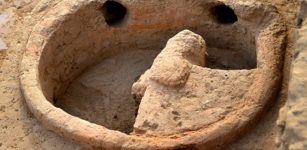 Fascinating Artifacts Excavated At Harappan Site In Rajasthan, India
Archaeology | Jun 10, 2017
Fascinating Artifacts Excavated At Harappan Site In Rajasthan, India
Archaeology | Jun 10, 2017 -
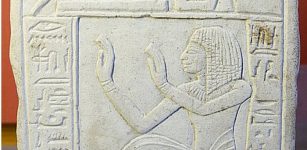 Meretseger: Theban Cobra Goddess Who Presided Over The Valley of The Kings
Egyptian Mythology | Jul 10, 2021
Meretseger: Theban Cobra Goddess Who Presided Over The Valley of The Kings
Egyptian Mythology | Jul 10, 2021 -
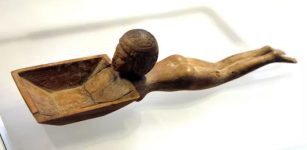 Intriguing And Suprising Ancient History Of Swimming That Started Over 100,000 Years Ago
Featured Stories | Dec 28, 2022
Intriguing And Suprising Ancient History Of Swimming That Started Over 100,000 Years Ago
Featured Stories | Dec 28, 2022 -
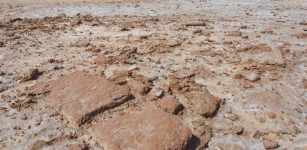 Ancient Trade Routes Between Iran And Mesopotamia – Uncovered
Archaeology | Dec 4, 2015
Ancient Trade Routes Between Iran And Mesopotamia – Uncovered
Archaeology | Dec 4, 2015 -
 Mystery Of Famous Viking Ruler Rollo: DNA Experts Seek The Truth About His Identity
Featured Stories | Mar 16, 2016
Mystery Of Famous Viking Ruler Rollo: DNA Experts Seek The Truth About His Identity
Featured Stories | Mar 16, 2016 -
 Advanced Ancient Technology – Talos A Greek Robot Created By The God Of The Forge
Featured Stories | Jun 28, 2014
Advanced Ancient Technology – Talos A Greek Robot Created By The God Of The Forge
Featured Stories | Jun 28, 2014 -
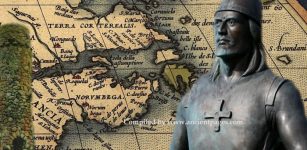 Is Legendary Norumbega In North America A Lost Viking Settlement?
Featured Stories | Jan 8, 2021
Is Legendary Norumbega In North America A Lost Viking Settlement?
Featured Stories | Jan 8, 2021 -
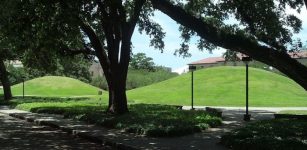 Campus Mounds Are The Oldest Known Human-Made Structures In North America – New Research Shows
Archaeology | Aug 22, 2022
Campus Mounds Are The Oldest Known Human-Made Structures In North America – New Research Shows
Archaeology | Aug 22, 2022 -
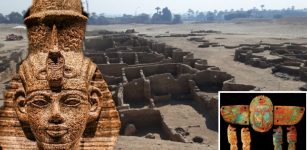 Lost Golden City Of Pharaoh Amenhotep III Discovered In Luxor
Archaeology | Apr 9, 2021
Lost Golden City Of Pharaoh Amenhotep III Discovered In Luxor
Archaeology | Apr 9, 2021 -
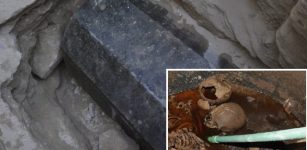 Thousands Want To Drink Red Liquid From The Granite Sarcophagus In Egypt
Archaeology | Jul 23, 2018
Thousands Want To Drink Red Liquid From The Granite Sarcophagus In Egypt
Archaeology | Jul 23, 2018 -
 Traces Of Viking Raids Remain Visible In Modern Russian Economy And Politics
Archaeology | Feb 9, 2022
Traces Of Viking Raids Remain Visible In Modern Russian Economy And Politics
Archaeology | Feb 9, 2022 -
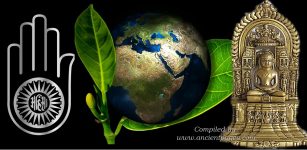 Ahimsa – Ancient Non-Violence Concept Teaching Compassion And Love Towards All Living Beings
Featured Stories | Jan 2, 2019
Ahimsa – Ancient Non-Violence Concept Teaching Compassion And Love Towards All Living Beings
Featured Stories | Jan 2, 2019 -
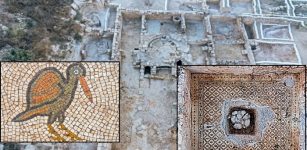 1,500-Year-Old “Church of the Glorious Martyr” With Beautiful Mosaic Unearthed Near Jerusalem
Archaeology | Oct 24, 2019
1,500-Year-Old “Church of the Glorious Martyr” With Beautiful Mosaic Unearthed Near Jerusalem
Archaeology | Oct 24, 2019 -
 Message In A Bottle Thrown Overboard In Germany 132 Years Ago Was Found In Australia
Archaeology | Mar 8, 2018
Message In A Bottle Thrown Overboard In Germany 132 Years Ago Was Found In Australia
Archaeology | Mar 8, 2018 -
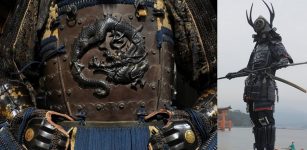 Ancient History Of The Samurai Armor
Featured Stories | Aug 27, 2018
Ancient History Of The Samurai Armor
Featured Stories | Aug 27, 2018 -
 What Were Ancient Egyptian Schools Like?
Ancient History Facts | Jul 14, 2016
What Were Ancient Egyptian Schools Like?
Ancient History Facts | Jul 14, 2016 -
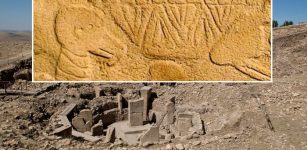 World’s Oldest Lunisolar Calendar May Have Been Discovered At Göbekli Tepe, Turkey
Archaeology | Aug 7, 2024
World’s Oldest Lunisolar Calendar May Have Been Discovered At Göbekli Tepe, Turkey
Archaeology | Aug 7, 2024 -
 On This Day In History: Declaration Of Independence Of The Mexican Empire Is Drafted – On Sep 28, 1821
News | Sep 28, 2016
On This Day In History: Declaration Of Independence Of The Mexican Empire Is Drafted – On Sep 28, 1821
News | Sep 28, 2016



